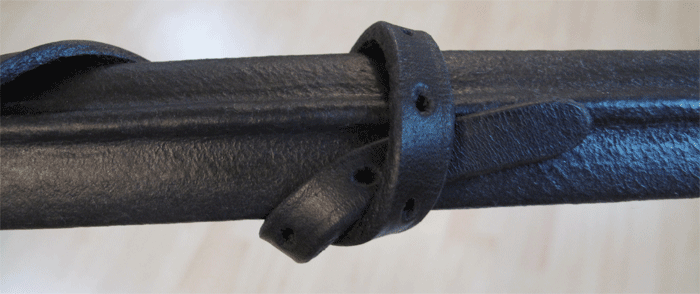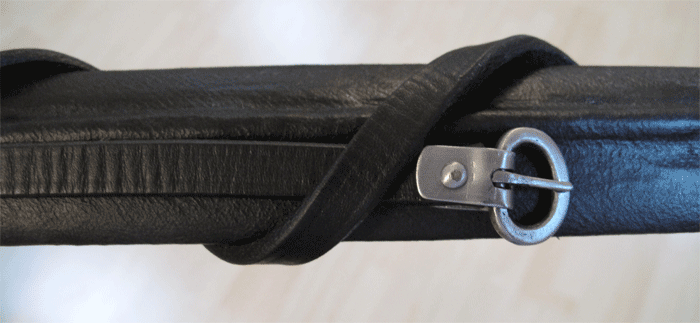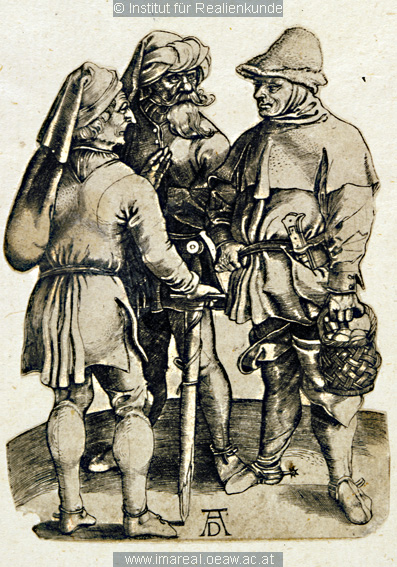Historic artwork from many periods shows the belt wound around the scabbard when the sword and scabbard are carried in the hand or otherwise not in use. That's how I was displaying the sword shown below but the belt was just loosely wound and held in place only by pressure against a hard surface. Looking at some early 14th c. German effigies last night I saw the same wound-belt treatment but noticed for the first time how the belt is held in place this way. The lowest loop of the belt is horizontal rather than at an angle, and the free end of the belt comes back around the scabbard at the same level and is tucked through that last loop. Although the short, buckle end of the belt is typically shown free, this is easily tucked down through the upper loops of the belt, making for a neater presentation.
This historically accurate method of securing the sword belt works very well with a simple suspension like this one but might not work as well with something more complicated. Just thought I'd pass along the idea. :D





